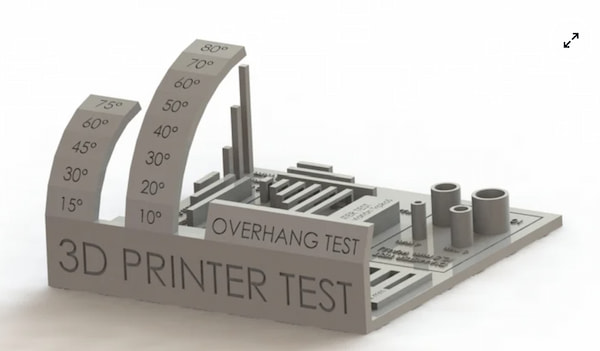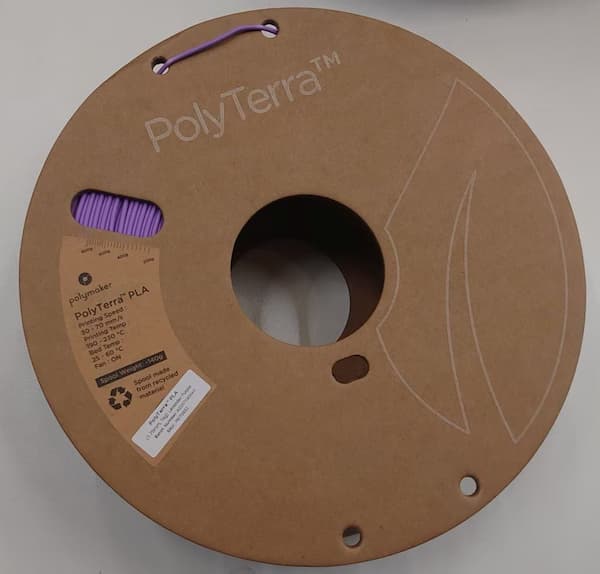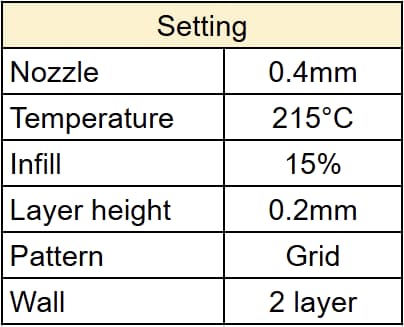Group assignment
There's a long distance between Macao and Shenzhen, we will take a remote course and finish our group assignment by the machine in our company - Macao Science Center.
Group member for this assignment: CHON KIT KUOK and LONG WAI CHAN
The group assignment of this week is testing the design rules for our 3D printers.
Test Model
In order to achieve the goal, we use the following model as references for printing.
Model: https://www.thingiverse.com/thing:2656594
- Support test
- Scale test
- Overhang test
- Hole test
- Diameter test
- Bridging test
Set up
The filament we used for the test medel is PLA from PolyTerra.
There are 3 types of machines in our labs, including BambuLab A1, Flashforge Finder3, and Prusa Mini.We used these machine to print the exactly same file, with same size, filament and parameters.
The parameters is set as follow:
- BambuLab
- Flashforge
- Prusa
Machine: Bambu A1
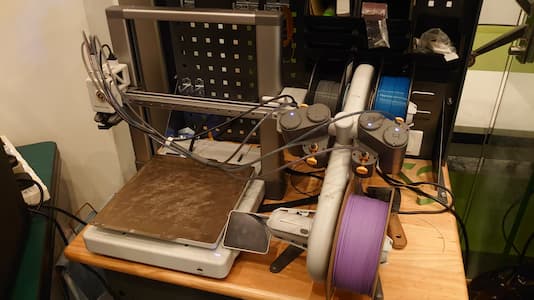
Slicing detail and result
Slicer: BambuStudio
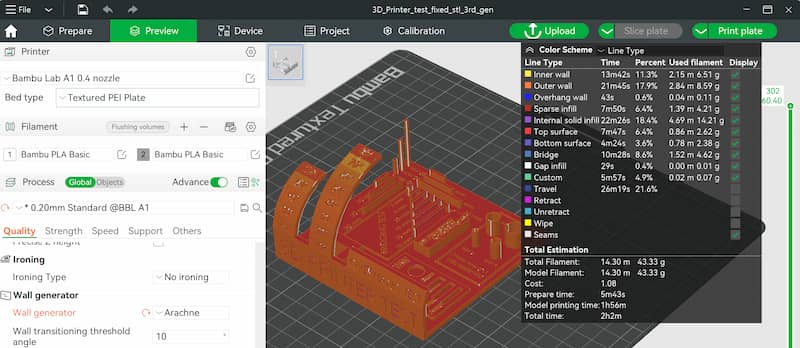
The text detail will disappear with the default setting, change the Wall generator to Arachne will fix the problem

Printing result
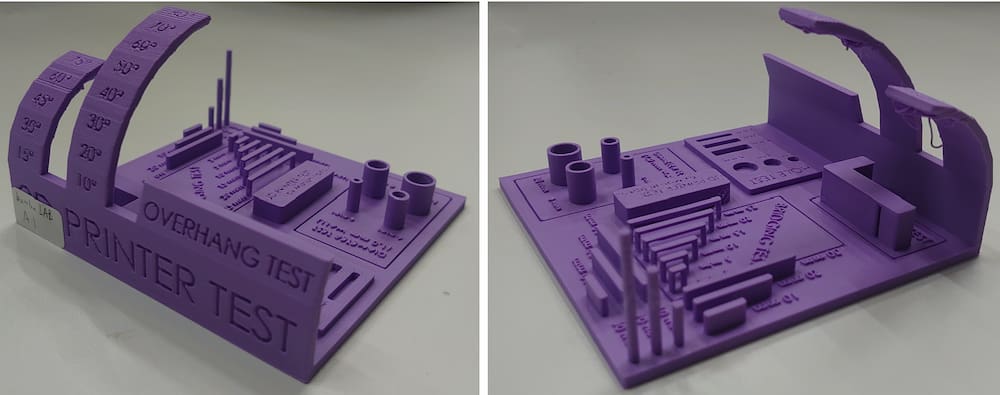
Machine: Flashforge Finder3
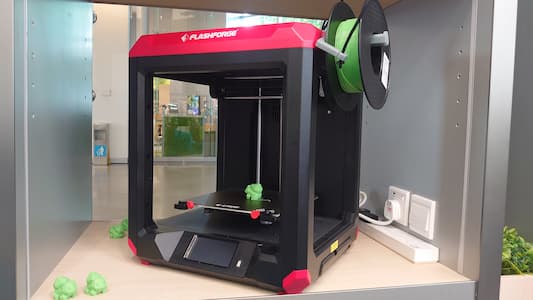
Slicing detail and result
Slicer: FlashPrint 5
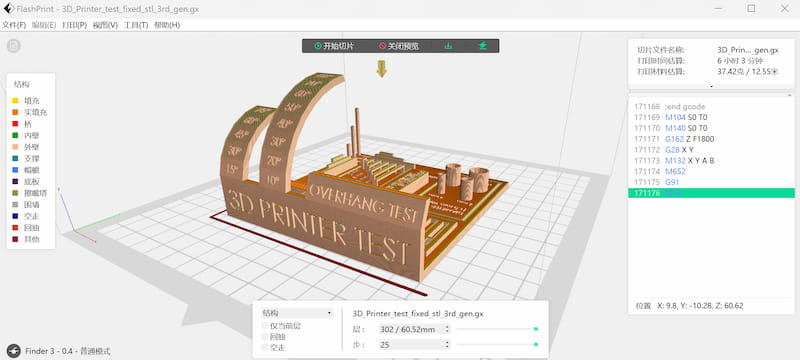
Printing result
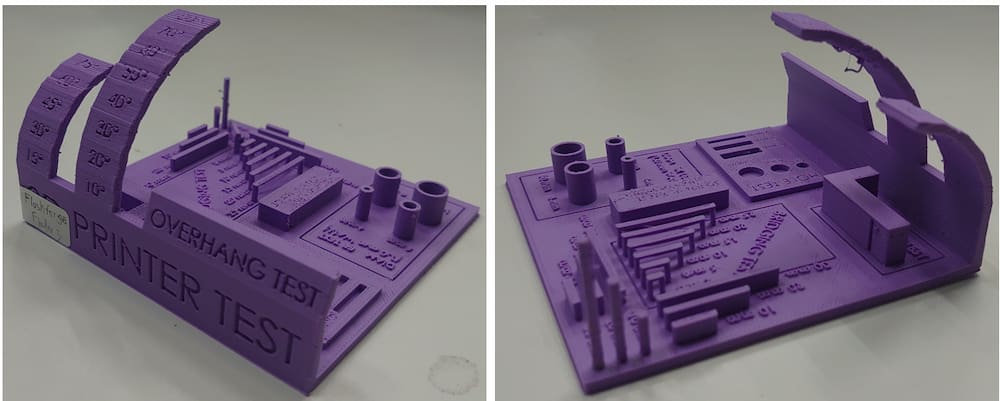
Machine: Prusa Mini
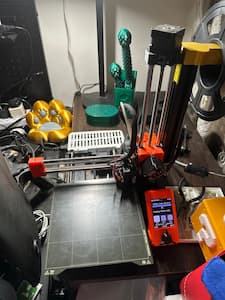
Slicing detail and result
Slicer: PrusaSlicer
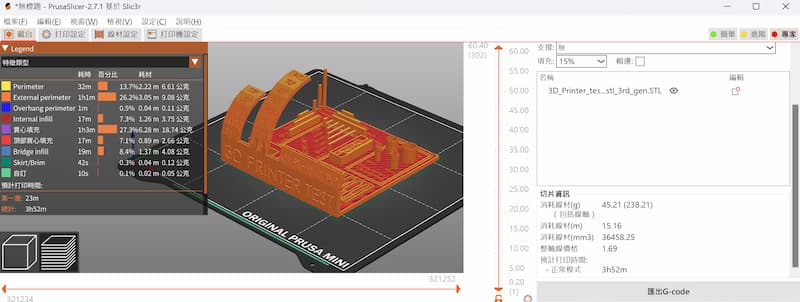
Printing result
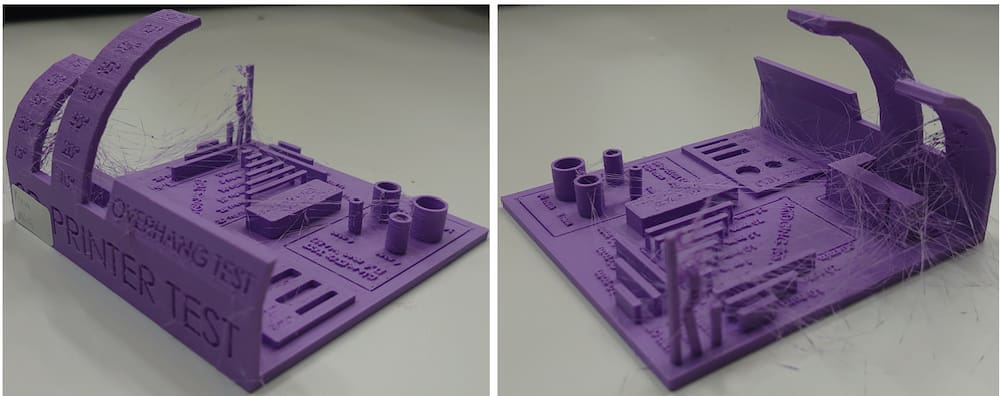
Overall result:
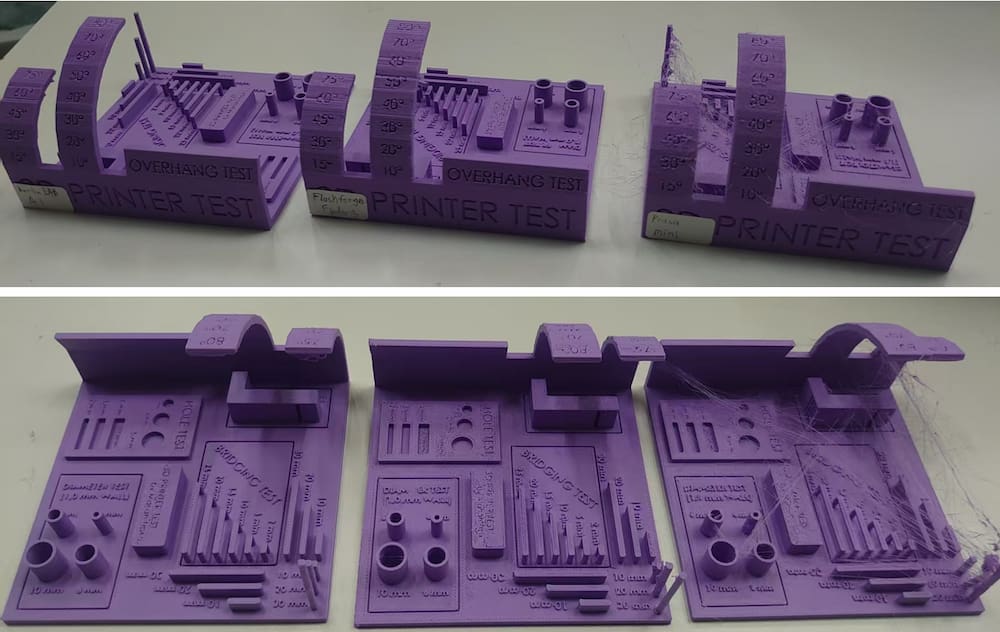
Analysing
We use a digital caliper to measure the model
Measuring rule
For exterior/casing measuring
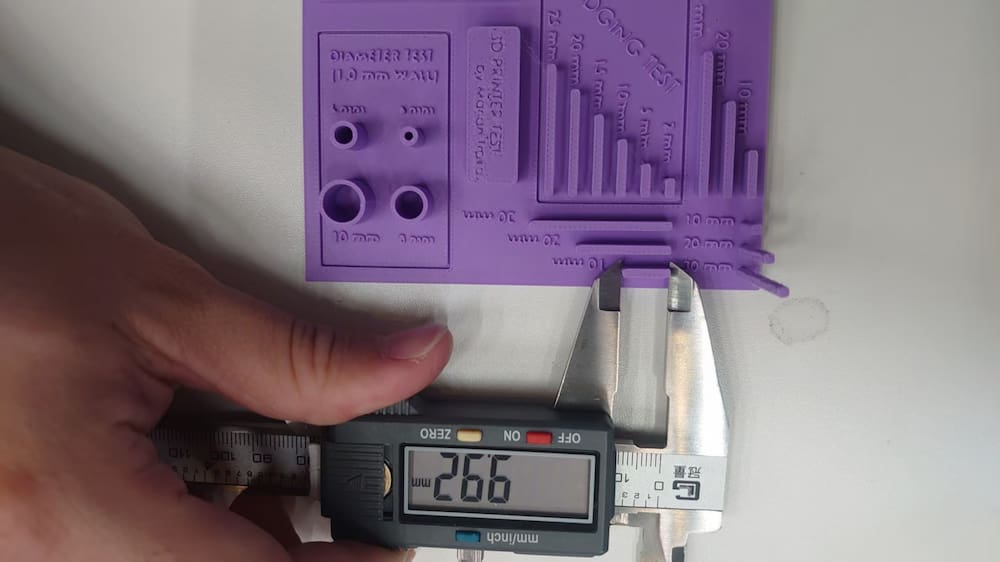
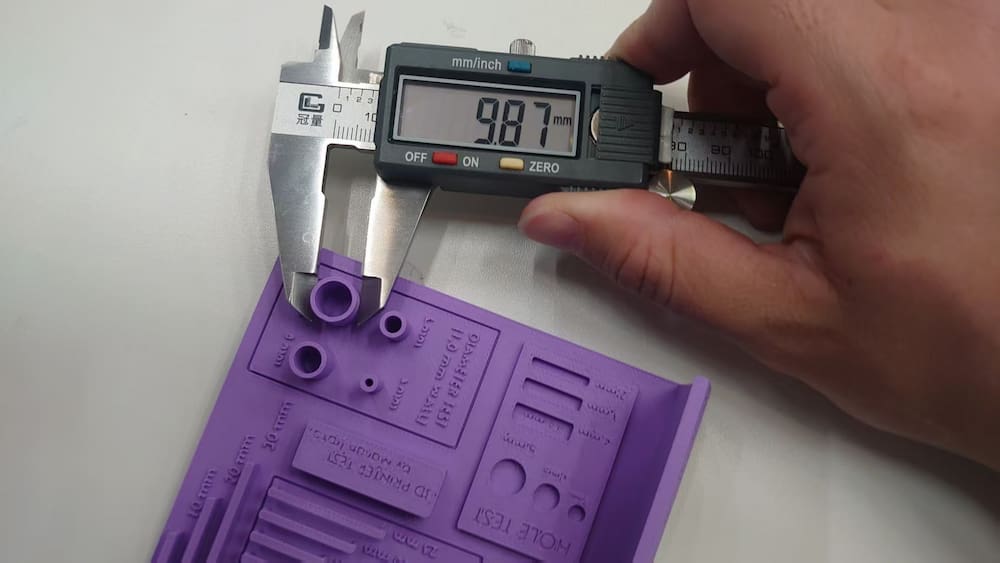
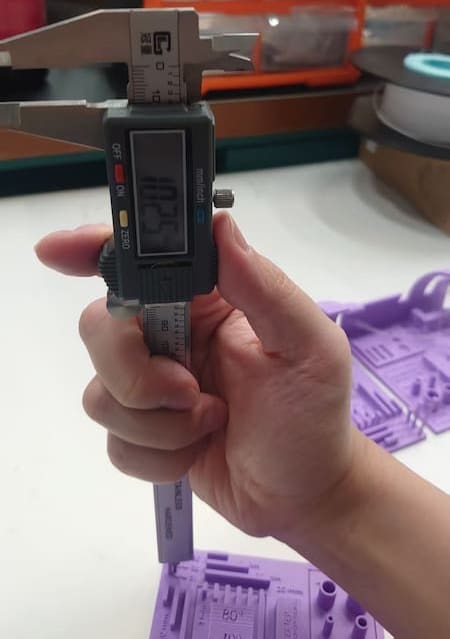
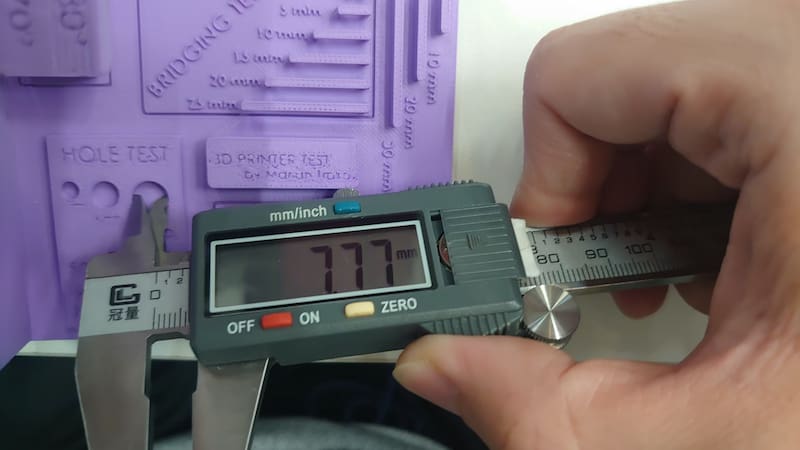
Different parts of the model provide various types of tests. Below is an analysis of each part.
Overhang test
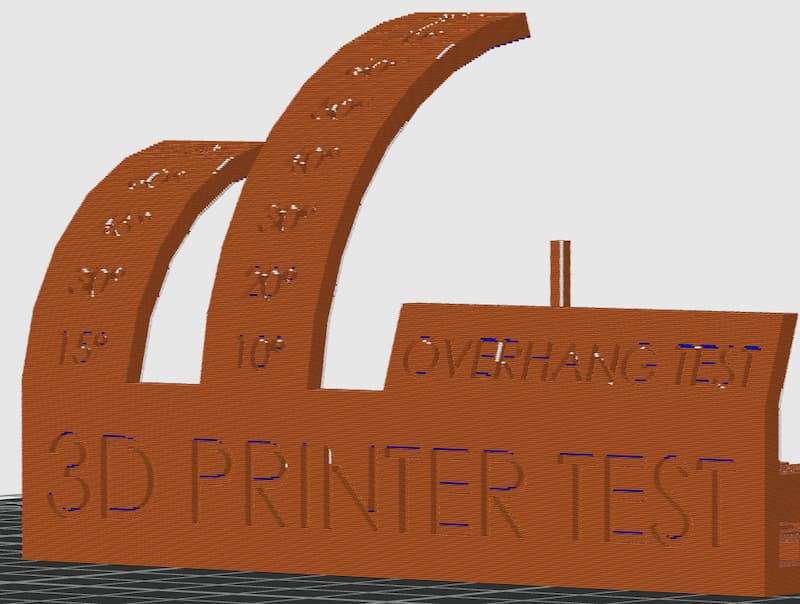 Testing the appearence of the overhang in different angle. If the overhang appears at a later angle, it indicates better printer performance. We record the first angle at which overhang occurs, as a result helps us determine at which angle supports need to be added in the slicer.
Testing the appearence of the overhang in different angle. If the overhang appears at a later angle, it indicates better printer performance. We record the first angle at which overhang occurs, as a result helps us determine at which angle supports need to be added in the slicer.
Hole test
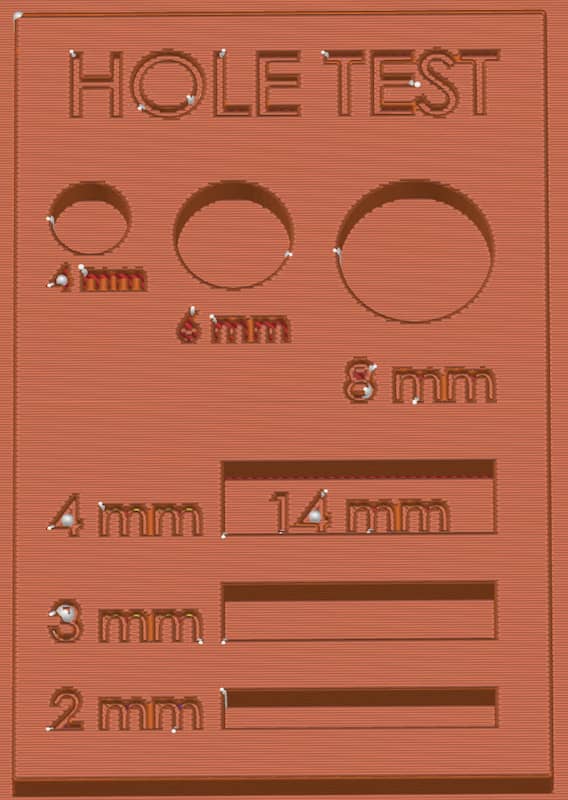 With this testing datas, you can add a suitable clearance to keep a high precision hole dimensions.
With this testing datas, you can add a suitable clearance to keep a high precision hole dimensions.
Test result:
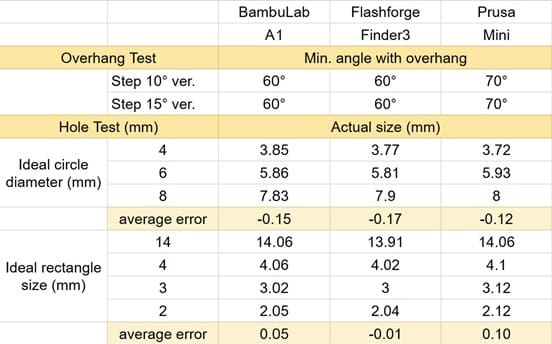
Diameter test
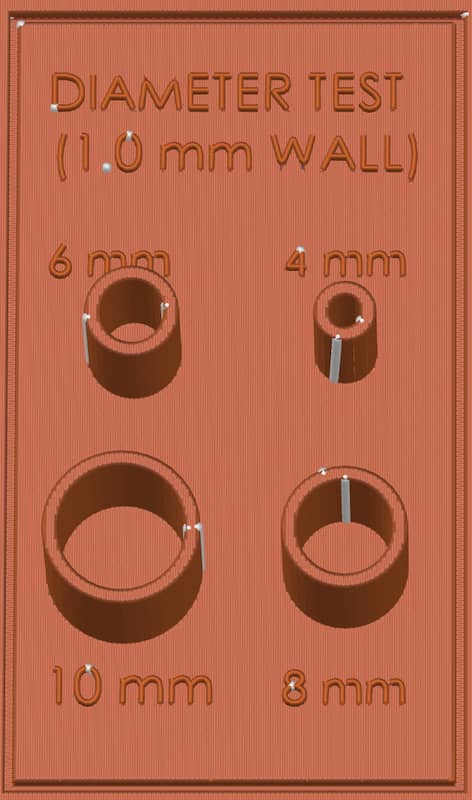
This test is a little bit like the hole test, but also can test both the outer and inner diameter of a cylinder, which can be a reference in design for high precision connection dimensions.
Test result:
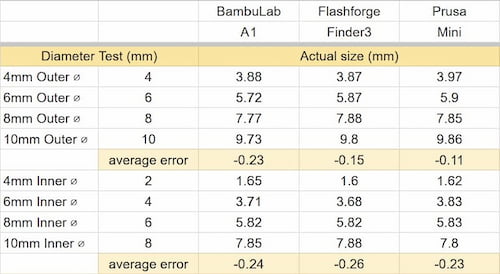
Scale test
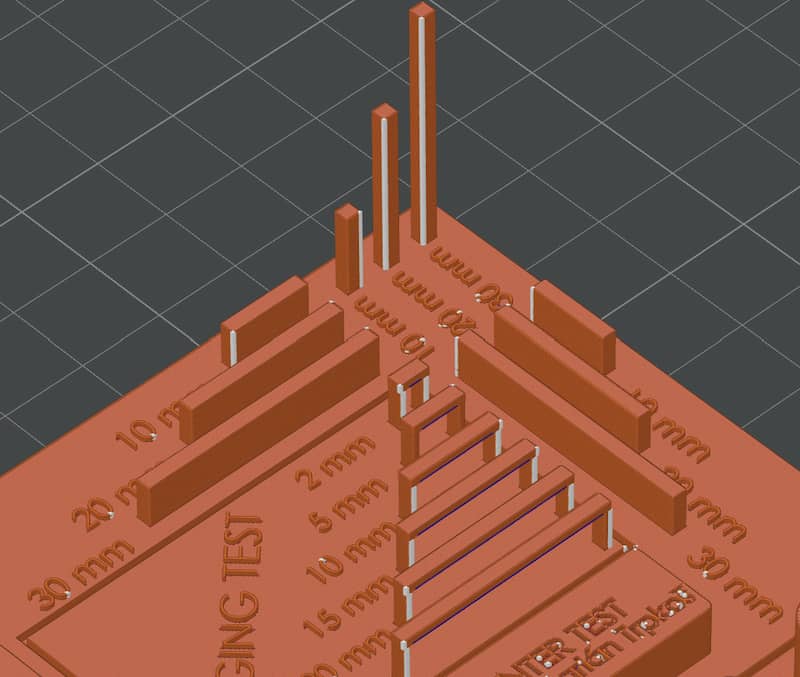
This test involves designing three rectangular prisms with different lengths, each oriented along the X, Y, and Z axis.
This setup can be used to test for any errors in the three axes of the 3D printer, which may affect the orientation of models in future placements.
Test result:
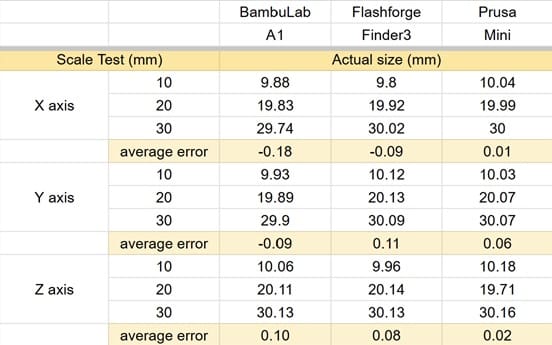
Bridging test
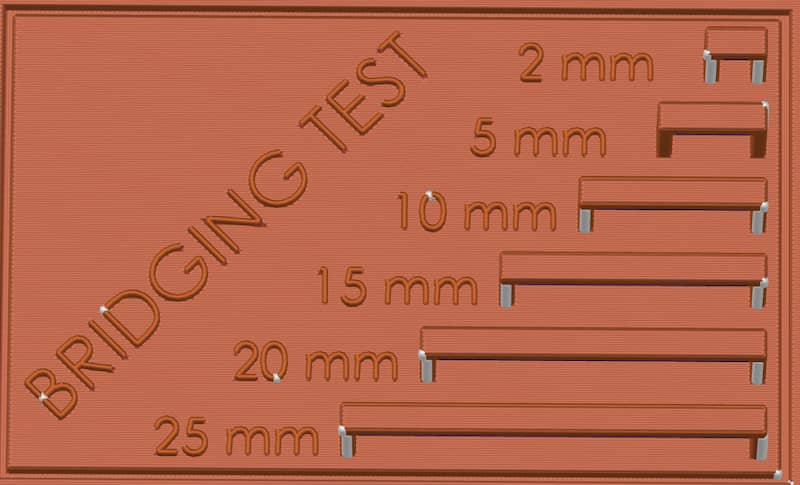
Similar to the overhang test, this test the appearence of the overhang in different length. We record the first length at which overhang occurs, as a result helps us determine from which length supports need to be added.
Test result:

Support test
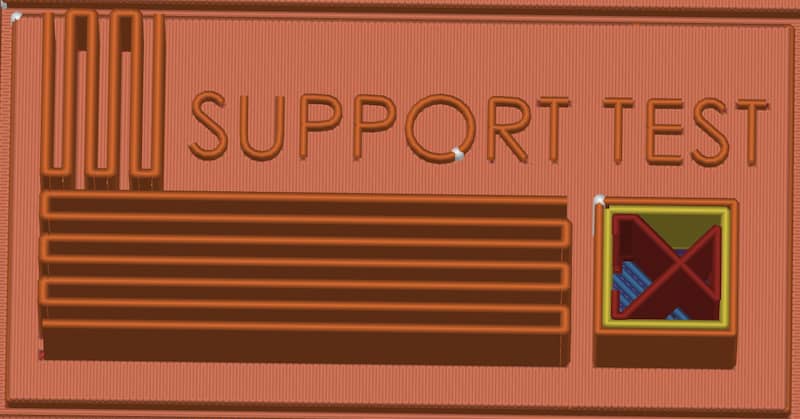
To test the support is strong enough or not.
In the end, we also compare the stringing and the printing time of the three machine.
Test result:

Through various tests, we can have a better understand of our machine, and consider which parameters should be added for size adjustments during the design process. Considering accuracy, appearance and printing time, the Bambu A1 will be the first choice for daily applications.
